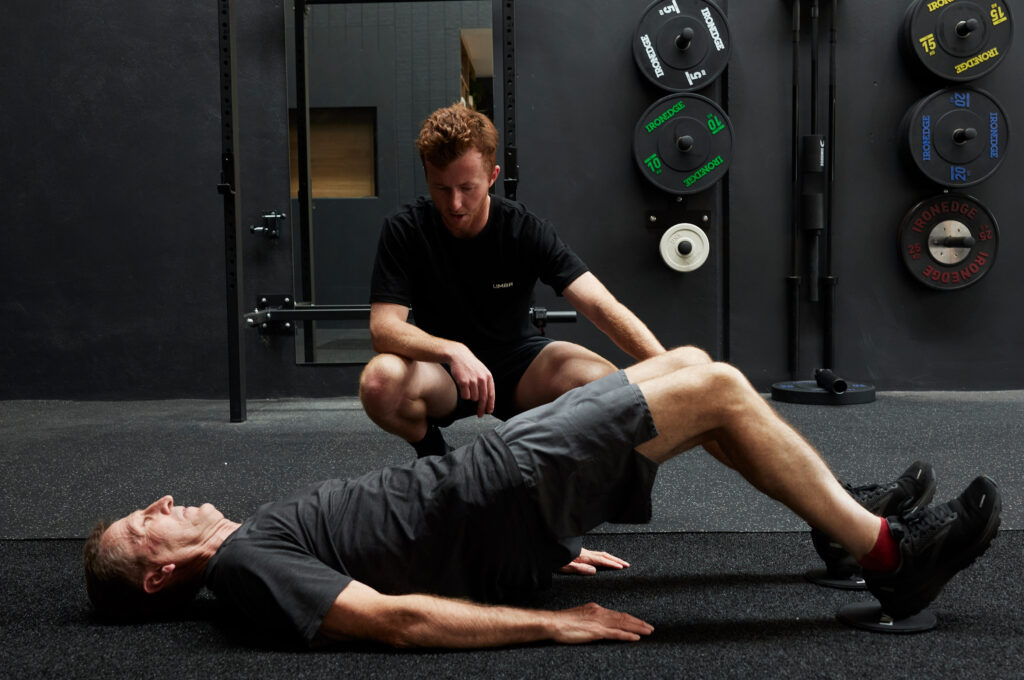FAQ: Hamstring strain (Bicep femoris strain)
Damien Ryan 11/10/23Injury: A bicep femoris strain is partial or full tearing of the bicep femoris muscle. The bicep femoris is one of three hamstring muscles and sits on the lateral aspect of the posterior thigh. Tearing can occur at the ‘muscle belly’ or at either end of the muscle in the tendon region. The bicep femoris is an important muscle that flexes the knee and extends the hip.  Source: https://www.rehabmypatient.com/hip/biceps-femoris-strain
Source: https://www.rehabmypatient.com/hip/biceps-femoris-strain
Where will I feel pain after straining my hamstring? In the back of your thigh region. Sites of pain following a hamstring strain can vary from your sit bone down to the back of your knee. Most commonly a hamstring strain occurs in the ‘muscle belly’ which will be in the mid-thigh region of your leg.
What movements will I struggle to perform if I have strained my hamstring? Everyday movements like bending forward to touch your toes, bending your knee (heel to bum) are common movements using your hamstring so following a hamstring strain this can reproduce your pain.
We complete tests in clinic like hamstring bridges, heel elevated bridges or a standing drag test.
Will I feel pain in any other regions of my body? Depending on the severity of your hamstring tear/strain, it is unlikely for you to feel pain in other regions of your body. Most people have a pinpoint localised region of discomfort when you use the hamstring muscle or on palpation of the muscle, this is indicative of where the muscle tearing has occurred.
How does a hamstring strain happen? Hamstring strains are very common in high-speed running sports – sprinting, football, soccer etc. There are multiple ways for you to strain your hamstring but it is often linked to your muscle lengthening under significant force. This can occur with sprinting, picking up a ball, kicking or being pushed from behind while running.
What things should I try initially once I’ve strained my hamstring? It is important to compress the region (thigh) after injury. A lot of people ice the region but recent studies have found this can be detrimental to tissue healing. Any movement that is pain-free is encouraged.
What things should I try to avoid in the initial stages of a hamstring strain? Avoid any movements that cause pain and don’t apply heat to the region in the initial stages of injury.
What type of exercises or movements do I need to learn/control/be stronger at to rehab a hamstring strain? Recent studies have found that the sooner you return to pain-free movement, the better. An important rehabilitation consideration when rehabbing the bicep femoris is loading the knee with more straight leg movements. The other two hamstring muscles – semitendinosus and semimembranous are primary movers when the knee is flexed.
It is also strongly encouraged to perform eccentric based movements within a tolerable pain-range. An eccentric movement is where the muscle is lengthening under load. Basic movements for this can be lying on your back, digging your heel in the ground and sliding your foot away from you. This can be progressed by performing double or single leg hamstring slides.  It is important for your health practitioner to guide you on what exercise is best for you as it does require clinical reasoning based off the severity of your injury, the location of your tear and what your strength capabilities are. Gone are the days of doing boring old banded hamstring curls on your belly.
It is important for your health practitioner to guide you on what exercise is best for you as it does require clinical reasoning based off the severity of your injury, the location of your tear and what your strength capabilities are. Gone are the days of doing boring old banded hamstring curls on your belly.
Source: https://pubmed.ncbi.nlm.nih.gov/35794049/
What other considerations contribute to someone straining their hamstring? Hamstring strains don’t always necessarily occur due to weak hamstrings! Hamstring strains can be multi-factorial in cause due to many other contributing factors. A person’s gluteal strength, running biomechanics, front of hip tension, pelvic positioning and control as well as ruling out any lumbar spine/neurological contributions to the hamstring is very important. The hamstring often is the first region to tear but it is not always the muscle to blame!
What treatments can help relieve some pain or fast track my rehabilitation? Depending on when you receive treatment, techniques such as massage, dry-needling, cupping, joint articulation and manipulation can all fast track your rehabilitation by addressing not only hamstring tension but also other contributing factors to why your hamstring was placed under significant load at the time of injury.
What are the expected timeframes for rehabilitating your hamstring strain? Depending on the severity of hamstring strain, timeframes are hard to predict. A low-grade (grade 1) hamstring strain can only be a 1–2 week injury. More significant tears (grade 3) can lead to 2-4 months of rehabilitation depending on the tear site and how it is managed. One thing that is very important to note is everyone recovers from hamstring strains at different speeds and hamstring rehabilitation is criteria based on your capability to perform strength exercises. The faster you complete your strength requirements, the quicker you can get back to doing what you love.
